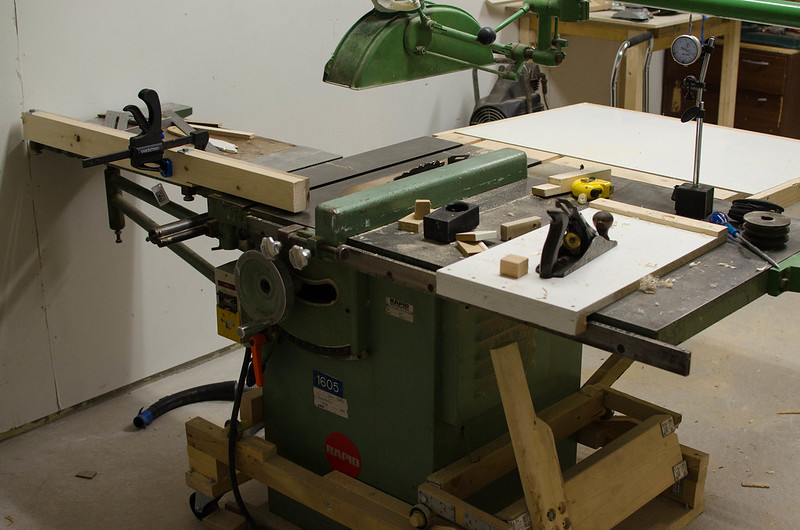I'm no expert Peter/most of my experience is with man made boards and am interested to hear other views. I'm another however that wouldn't want to move away from using a slider.
I'd say the risk of the rear of a workpiece getting unintentionally skimmed arises mostly from poor technique - the actual fence end position relative to the blade, and the location and direction of the push/type of pusher need to be reasonably correct. If the fence is pulled back much past the centreline of the blade though then some care is in my limited experience needed (while not overdoing the pressure) to keep the rear end of the workpiece snug against the fence - because there's some possibility of it trying to hang a right around the end of the fence with the result that the LHS/rear end may tend to push into the side of the teeth on the leading/cutting edge of the blade. Which isn't necessarily a significant risk as the teeth are cutting down, but it creates some potential to skim the end of the edge of the workpiece. (especially on a 10in blade which is where i've seen it happen)
Get it right and there's no problem, and the workpiece even eases a little away from the blade as it clears the fence.
My K3 Hammer is actually fitted with an Incra TS LS (full length) rip fence. I have however a shorter DIY sub fence made from a length of anodised heavy aluminium angle that mounts off the T slots in it. (i couldn't find a suitable section to pull off the alternate low/high fence option as the Unifence though) This as the others functions as a short/low fence when required - it can be very useful to clear the riving knife mounted top guard.




 Reply With Quote
Reply With Quote




